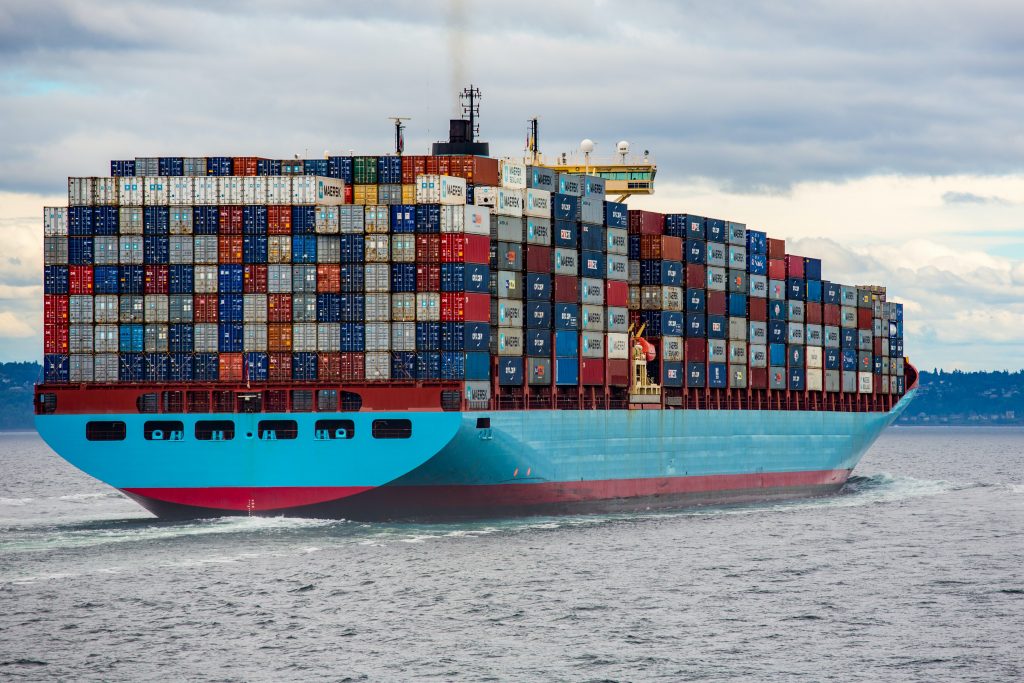
AGENDA 2025: Distortions of competition from third countries: How can fair global competition be strengthened?
This article is part of the D’Kart Spotlights: AGENDA 2025, in which experts from academia and practice comment on aspects of the Competition Policy Agenda presented by the Federal Ministry of Economic Affairs and Climate Action (BMWK). The contributions already published can be found here.
According to its competition policy agenda, the Federal Ministry for Economic Affairs and Climate Action wants to tackle distortions of competition from countries outside the European Union. Oliver Budzinski and Annika Stöhr shed some light on this from the perspective of economists.
1. Introduction
In international markets, companies from different countries compete with each other for the favour of buyers and consumers. These companies are direct competitors of each other, but are subject to different regulations and economic systems in their home markets depending on their country of origin. Even assuming free trade (the terms of which are subject to be established by (in our case European and German) trade policy), distortions of competition can occur due to different national regulatory and economic systems. Therefore, according to its competition policy agenda, the German government is committed to expanding and sharpening the toolbox of European competition policy to combat unfair competition practices by third countries. How this is to be done remains comparatively vague and imprecise. We first want to systematise such distortions of competition by third countries (section 2), then examine the suitability of competition policy as the right tool for combating the problems (section 3), before concluding with an outlook on possible measures (section 4).
2. Problem
What causes “distortions of competition from abroad”? Here are to be mentioned
- company acquisitions financed by third-country taxpayers’ money,
- competition-distorting subsidies by third countries, and
- competition-distorting regulations in third countries.

a) Company acquisitions by third countries
Taxpayer-funded company acquisitions represent a serious systematic – and also often irreversible or at least difficult to reverse – market distortions by third countries. These can take the form of mergers with or acquisitions of private companies by foreign state-owned firms. Furthermore, foreign state funds, which (have to) invest part of their assets abroad, also use this possibility to implement industrial policy and strategic goals. This is clearly illustrated by the actions of the Chinese government, whose takeovers and investments in German companies have increased significantly since 2011. This approach has already been addressed in part by the German government, for example through the tightening of the Foreign Trade and Payments Ordinance or its own entry into companies at risk of takeover (for example, KfW’s entry into the grid operator 50Hertz in 2018, which was done to prevent a takeover by a Chinese state-owned company).
There are many reasons for this form of influence: the takeovers of innovative companies, which are often irreversible or difficult to reverse, can compensate for any existing competitive disadvantages and promote technology transfer. At the same time, the acquiring company benefits from relevant know-how concerning the respective national and EU internal market. It may also be possible to circumvent existing trade barriers.
The resulting distortions of competition can be derived from these reasons: In principle, the acquisition of a privately owned company by a state, a state-owned company or a sovereign wealth fund (SWF) is a form of nationalisation of competitors. If this were to happen domestically, we would clearly speak of a distortion of competition, since the state or state-financed owner now no longer has an interest in “his” company being exposed to fair and intensive competition. Combined with the regulatory power of the state, an institutional weakening of competition in this market is to be expected. At the same time, the company nationalised in this way gains another relevant competitive advantage: by using taxpayer money, a source of finance that is difficult to exhaust, and the associated advantages of cheaper and more far-reaching financing opportunities as well as extensive protection against insolvency, the company gains an unfair advantage in competition with private companies. In the long term, the expected bureaucratisation of the state-owned enterprise, the speed and extent of which admittedly depends to a large extent on the design of the state sponsorship, will lead to a decline in efficiency and thus to a competitive disadvantage. But this is precisely what increases the incentive for the state as a (direct or indirect) owner to protect the company from competitive pressure with the help of state measures.
If a European company is bought by a third country (or a state-owned company from a third country), the effects and incentive effects mentioned above may also occur. In addition, it may also be in the interest of the buying state(-owned enterprise) and its industrial policy agenda to weaken international competitors or force them out of the market altogether. The discontinuation of an acquired company (after technology and know-how transfer, if applicable) potentially leads to an increase in market concentration. The potential discontinuation of innovation projects of the target company and thus the “banishment of the danger” of future competition (based on the strategy of so-called killer acquisitions) also leads to a considerable distortion of competition. Through the tax-financed hedging of possible risks, inefficient transactions can also be implemented to realise this goal.
In principle, in the case of company acquisitions, the transaction volume (the purchase price) reflects the efficiency gains or increasing sales expected by the acquirer. State-financed acquisitions, on the other hand, can lead to inflated purchase prices (overbidding) and at the same time prevent market-based acquirers from achieving efficiency gains or gaining access to key technologies.
In the case of SWFs, it should be noted that the extent of the potentially distortive effects depends strongly on the design of the fund. A Norwegian pension fund, which does not pursue industrial policy, may be assessed differently here than a Qatari SWF, which is a de facto instrument of economic policy.
b) Competition-distorting subsidies in third countries
Related to this are competition-distorting subsidies from third countries for their domestic companies, which can also give the subsidised companies an unfair advantage with regard to the takeover of other companies. Examples include preferential tax treatment, which directly or indirectly has a selective effect on individual companies or sectors. But direct financial subsidies, for example for development projects, are also not uncommon. Just like state aid from EU member states, these subsidies can distort competition in the internal market as well as in individual member states and lead to an uneven playing field. Less efficient companies can thus increase their market share at the expense of companies that are actually more efficient. For this reason, subsidies from the member states themselves are subject to state aid control policy, while there is no corresponding regulation at EU level for subsidies from third countries yet. However, a corresponding draft regulation has been available since 2021 and is currently in the trilogue process. These negotiations are specifically addressed by the Federal Ministry for Economic Affairs and Climate Action (BMWK) as part of the competition policy agenda – as the only concrete point – as a set of instruments against distortions of competition from third countries.
Third-country subsidies can lead to an inefficient overall allocation of resources and, above all, to a loss of competitiveness and innovation potential among the companies that do not receive such subsidies – but also among the subsidised companies themselves, which now focus more on receiving further subsidies (Krueger 1974; Tollison 1982, 2012). Similar to the company acquisitions discussed earlier, third-country subsidies can also lead to costly and often wasteful imitation and thus to a subsidy race between public agencies – as has long been known (Fox 1998). The granting of third-country subsidies may also be guided by strategic objectives of the respective government to establish a strong presence in the EU or to promote an acquisition and subsequent technology transfer to other production sites outside the EU. This is all the more problematic if the financial relations between the third country and the subsidised companies are not transparent, i.e. if the second and the first type of distortions of competition by third countries are combined and mixed. This lack of transparency and, where applicable, reciprocity in access to markets in third countries (foreclosure) reinforce the distorting effect of subsidies. Similar concerns exist in particular with regard to the participation of companies from third countries in public tenders.
c) Competition-distorting regulations in third countries
Basically, the same effects as those caused by subsidies from third countries can also be caused by strategic regulations in third countries that favour companies from third countries over European firms (and others). Among the “well-known” instruments are discriminatory competition rules in third countries (such as the permission of export cartels or stricter rules for takeovers of domestic companies by foreign companies) or the selective non-enforcement of competition rules against domestic companies. The granting or state protection of domestic market power is also one of the potentially competition-distorting measures of third countries, because the domestic market power rents can now be used internally by companies to cross-subsidise activities in foreign markets, to the detriment of competitors there.
Distortions of competition due to the violation of social and ecological standards in third countries represent a complex, albeit highly topical, problem. Here it is already difficult to determine to what extent different standards are based on different social situations and goals, or represent a strategic instrument to influence competition. In this regard, we reference to the article on a “Roadmap to Sustainability” by Elena Wiese on this blog, which deals with the proactive approach to an appropriate competition framework envisaged by the BMWK.

3. Suitability of competition policy
Competition policy belongs to those regulatory areas that are organised nationally or at the level of economic and state communities (such as the European Union) and, despite territorial or jurisdictional ties, attempt to control or protect competition on overarching international and intercontinental markets (on the overall topic of international competition policy: Budzinski 2008, 2015, 2022). A uniform global competition policy does not exist. Instead, almost all competition authorities operate on the basis of the effects doctrine: all distortions of competition that affect domestic markets are justiciable under domestic competition rules, regardless of whether they are committed domestically or in third countries. At least competition authorities from states and communities with large and relevant internal markets can usually also enforce their competition rules very well via the effects doctrine (Budzinski 2008: pp. 32-52). Gaps in protection remain above all for small and poor countries and in the case of conflicts between large competition jurisdictions (e.g. in the case of conflicting decisions on a case in the USA and in the EU). In addition, with the International Competition Network (ICN; see also Lugard & Anderson 2022), there is a cooperation forum of the world’s competition authorities that has been trying to reduce conflicts and contradictions for more than 20 years. For the EU and also for Germany, the international system of competition policies works quite well overall.
For which of the problems identified in the previous section does national or European competition policy represent a suitable instrument?
a) Company acquisitions by third countries
Merger control is classically a task of national or EU competition policy and the corresponding authorities. Thus, through ex-ante notification and analysis of potentially competition-distorting mergers (significant impediment of effective competition, in particular through the creation of a dominant position, e.g. pursuant to § 36(1) of the Act against Restraints of Competition (GWB)), these very distortions are to be prevented by imposing conditions or prohibitions. If one now assumes that mergers with state-owned enterprises of third countries potentially pose an increased risk of distortions of competition – in addition to those currently already taken into account in merger control – it is appropriate to address this issue within merger control. Impediments to effective competition can, as shown above, also occur due to special structures of the companies (to be) acquired. Also in the context of the effects doctrine, national or EU competition policy seems suitable for stronger control of acquisitions by third state-owned enterprises, since potential distortions are caused by the actions of foreign enterprises, but these have an impact on the conditions of competition in the national or internal market.
b) Competition-distorting subsidies in third countries
Subsidies in third countries fall less clearly into the realm of competition policy, but can also be seen as part of (strategic) trade policy and accordingly located in trade agreements. On the other hand, European competition policy, as one of very few competition regimes in the world, uses the control of state aid for reasons of competition protection (EU state aid control; see Schmidt & Schmidt 2006). In the EU, state aid control represents a special fourth pillar of competition policy alongside cartel policy, abuse control and merger control. In this respect, it is quite logical from an EU perspective to also target state aid from third countries (subsidies) that distort competition.
One of the problems of competition policy-based subsidy control opposite to third countries is access to the policies of these third countries, which grant the distorting subsidies, often based on and in accordance with national law and national sovereignty. Although enforcement via the effects doctrine and via access to the domestic sales of the anti-competitively subsidised third-country companies is certainly conceivable, the probability of diplomatic, competition and trade policy conflicts with these third countries increases massively, as exemplified not least by the controversies surrounding the subsidies of Boeing in the USA and Airbus in Europe (Fox 1998). Therefore, a third-country subsidy control should be flanked by trade policy, especially since the legitimacy of a competition policy subsidy control – which does not exist in most third countries – is not universally recognised.
c) Competition-distorting regulations in third countries
A discriminatory design and/or application of national competition rules in third countries can hardly be meaningfully solved by reforms of European or German competition policy. Here, a suitable way is the activity of the ICN, through which some progress has already been made in this direction through the principles of published best practices and peer pressure within the network of competition authorities (Budzinski 2015, 2022). If this is deemed insufficient, a new initiative for international competition rules would be desirable, or for a coherent system of competition policies that puts common welfare above national welfare (see for a proposal Budzinski 2009, 2018).
The (non-) compliance with social and environmental standards by (third-country) companies abroad can involve competition problems, but cannot be addressed by competition regulation, or at least not exclusively. Climate protection goals, protection of human rights as well as animal welfare and environmental protection are goals of society as a whole that cannot be implemented with competition law alone or as a priority (Schinkel & Tóth 2016, 2020; Schinkel & Spiegel 2017; Martinez et al. 2019; Schinkel & Treuren 2021). Rather, where there is a need for action, also taking into account the justified interests and different levels of economic development of third countries, there is a need for direct regulations which, for example, also bind goods and corporate activities from third countries via the country of destination principle. If, for example, factory farming is to be prevented, a corresponding ban is needed; allowing restrictions on competition for the voluntary elimination of factory farming by producers will, through the back door, solve their profit interests more than the genuine animal welfare and environmental problems (Schinkel & Tóth 2016, 2020; Schinkel & Spiegel 2017; Martinez et al. 2019; Schinkel & Treuren 2021). Empirical analyses of public welfare oriented competition policy exceptions show that usually the public welfare goals are missed and at the same time welfare decreases – be it through green cartels or supposedly public welfare oriented corporate mergers (Budzinski & Stöhr 2019a, 2019b, 2020, 2021; Stöhr & Budzinski 2019). Overall, great scepticism is warranted here that competition policy – with few exceptions – is the right place to achieve these policy goals. This is already true within the internal market – and even more so vis-à-vis non-compliance with standards in third countries.
On top of that, a distinction has to be made whether (i) a distortion of competition results from individual third-country companies gaining an unfair competitive advantage because they can undermine certain standards, or whether (ii) the violation of certain standards takes place across companies by (almost) all market participants. It is undisputed that child labour is a significant problem and must be combated – primarily for non-competitive reasons. If child labour is “common” within an industry or for the production of a certain product group, the individual company does not gain a competitive advantage by violating the social standard, because “everyone does it that way”. It could be constructed that any company (from the EU or from a third country; this would not make a difference here) would be at risk of suffering a competitive disadvantage if it changed its supply chains and respected the standard (level playing field problem). The question is, however, whether one really wants to rely on an indirect competition policy argument to combat an obvious social problem such as child labour. In our view, this would not do justice to the scope and relevance of the problem. Here, instruments of trade policy in combination with national or European regulations such as the German Act on Corporate Due Diligence in Supply Chains or the European Commission’s proposal for a Directive on corporate sustainability due diligence (CSDD) are probably better suited than competition policy or competition law. This is without prejudice to the question of an effective and efficient design of such regulations, which is not discussed here.

4. Thought-provoking impulse
Finally, some suggestions for possible measures to regulate competition in the cases listed above will be presented. It becomes clear that in some cases there is scope for that – even beyond the BMWK’s previous proposal to address subsidies from third countries. At the same time, policy objectives such as the protection of animals and the environment can hardly be addressed by means of competition policy.
a) Company acquisitions by third countries
This area has been identified as a domain of European or national competition policy and should be addressed within the framework of a reform/expansion of competition policy competences. There are a number of possibilities for this.
The mildest intervention would be to ensure that all takeovers involving third countries or third-country companies are actually examined within the framework of merger control. A general obligation to notify takeovers in which third states are directly involved through state-owned companies or funds – irrespective of any turnover or transaction thresholds – would achieve this goal. Alternatively, by adjusting the calculation of turnover (e.g. doubling turnover figures if state-owned acquirers are at work), the respective thresholds could be adjusted downwards, similar to the regulations for press merger control under § 38(3) GWB, in order to also include acquisitions of medium-sized (technology) companies in the examination by merger control.
In order to be able to better prevent anticompetitive state acquisitions, the merger control framework could be supplemented by a targeted expansion of the review criteria during the in-depth review of a corresponding merger with third state participation or an adjustment of the existing criteria. For example, direct and indirect state participation in the acquirer could be considered as strengthening market power or the “market shares” that the third country already holds in the relevant national or domestic market across industries could be used to inform the decision. Incentives for technology transfer could also be considered as a criterion. Of course, the quality of such regulations depends strongly on the exact design. There is a need for research on this!
As the most radical measure, against the background of preventing the nationalisation of companies by third-country governments, a ban on such takeovers could be considered, possibly with an exception for micro-takeovers. This could also be combined with an unbundling clause for already completed company takeovers by third countries. However, potential deterrence effects for desired (actually welfare-increasing) mergers as well as resulting obstacles to innovation and an increasing potential for conflict with third countries in the case of the more radical measures would have to be taken into account. In any case, the points mentioned shall only serve as suggestions for concrete measures proposed by research and the regulator and cannot be discussed in detail here.
Finally, it should be noted that the problem of third-country takeovers is currently also addressed within the proposal for a Regulation on foreign subsidies distorting the internal market, whereby one of the three planned tools is to explicitly enable the investigation of mergers (with corresponding turnover and subsidy thresholds) which have benefited from the subsidy of a third country. Although this again does not address the specific case of takeovers by third-state-owned enterprises, this proposal does address the influence of third state governments on mergers more clearly than it is currently the case, for example, in the German competition regime.
b) Competition-distorting subsidies in third countries
Apart from the “grand design” of a third-country subsidy control, which is (over-) ambitious and problematic on various levels (see 3 (b)), a coordination of trade and competition policy is essential here, whereby competition policy is more likely to have smaller and flanking measures.
Conceivable measures would be, among others, the consideration of third-state subsidies in merger control – as provided for in the already mentioned Commission proposal for a Regulation – as well as in abuse control as a tightening criterion. The two further tools, which are to be used by the European Commission for the investigation of subsidies from third countries that are potentially problematic from a competition point of view, refer on the one hand to the distortions in public tenders caused by subsidies (if the public contract exceeds a value of 250 million euros). On the other hand, it shall be possible to address other, unspecified market situations as well as smaller mergers and public tenders (without threshold values). This illustrates that third-state subsidies have been recognised as a trigger of potential distortions of competition on the internal market and that they can be addressed by means of competitive regulation, whereby the primacy here should continue to lie within trade policy. A more detailed analysis of the possibilities must again be dispensed with here.
c) Competition-distorting regulations in third countries
The discussion in section 3 (c) has already made it clear that European and national competition policy is not the preferred tool here. Instead, it would be desirable to further promote efforts to internationalise competition policy (for instance via the ICN or any more far-reaching proposals).
Similarly, regulators should exercise restraint with regard to the regulation of possible violations of social or environmental standards, as it cannot be assumed that compliance with such standards can be efficiently captured by competition policy.


Prof. Dr. Oliver Budzinski is director of the Institute for Economics and holds the chair for Economic Theory at TU Ilmenau.
Annika Stöhr is referent for Industrial Policy at the Federal Ministry for Economic Affairs and Climate Action and associated researcher in economic theory at TU Ilmenau. The views expressed here are those of the author and should not be taken as the official position of the Federal Ministry for Economic Affairs and Climate Action.